I like die clash markings. No getting around it, I’m fascinated by the “extra design elements” on the coin. There isn’t a date in the Victoria series that doesn’t have a visible clash on some coins. I can’t keep them all, so what’s collectable? For me it’s the unusual ones.
I stumbled on clashes by accident. I wasn’t looking for them but they just started to pop out at me. Knowing where to look is the key to finding cool ones. Knowing where to look comes from knowing how a clash occurs . Let’s explore that first and then move on to the cool stuff.
We all know how dies clash together, the planchet fails to show up between the dies when the striking motion occurs. This can impart design elements from one die to the other. The operative word here is “can”. Even if design elements are transferred, they can be polished out of the dies or just plain worn out with use. So what do I mean by the phrase “can be transferred”?
Thinking this through a bit leads us to consider the designs on the dies, and what happens when they come together. First, the dies design elements are mirror images of what we see on the coin. Second, what is raised on the coin is incuse on the die. When the dies strike a planchet with appropriate force, the metal on the planchet flows into the incuse areas of the dies creating the raised elements of the coin. When the two dies come together without a planchet in between, there are 3 possible outcomes:
1. Field to field - Since no design elements are present, no design is transferred
2. Design to design - Since both elements are incuse there is nothing to transfer
3. Design to field – Ah, now something happens. The field from one die flows into the incuse area of the other die creating a raised element in the field of the first die.
Since the resulting new element is a raised spot, or high point, in the field on the die, it will impart an incuse element on the coins produced after the clash of the dies. The results are the markings I look for. The real cool ones I keep.
So what is there to look for and where do you need to look? Since the design elements of a die are mirror images of what is on a coin, we need to think in mirror image to visualize the impact areas on a coin. Look in the fields of the coin for these incuse design elements. The two overlay graphics below will help you peg the areas to look for and what design elements you can expect. You will often need to tilt the coin back and forth against a fixed light source in the same manner that you would check for luster. This will cause a clash to “pop”. Start looking for cool die clashes to add to your variety collection. You’ll be surprised at what you will find.
I had originally published the photographs of clash examples used below in the CN Journal , Vol. 53 Number 2, March 2008.
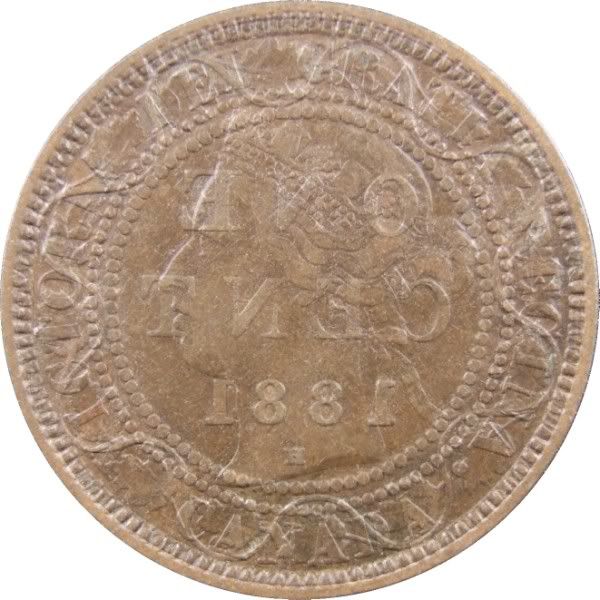 | ||
| Potential reverse element locations on the obverse side of a coin due to a clash. These will only be in the fields. |
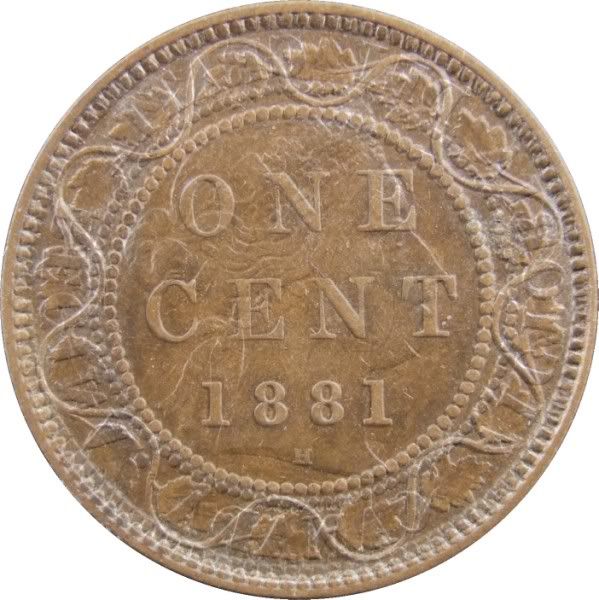 |
| Potential obverse element locations on the reverse side of a coin due to a clash. These will only be in the fields. |
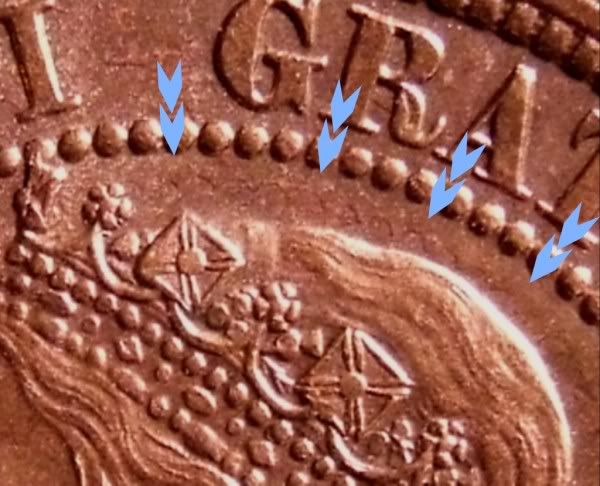 |
| Reverse bead clash between head and obverse bead line. This is fairly common. |
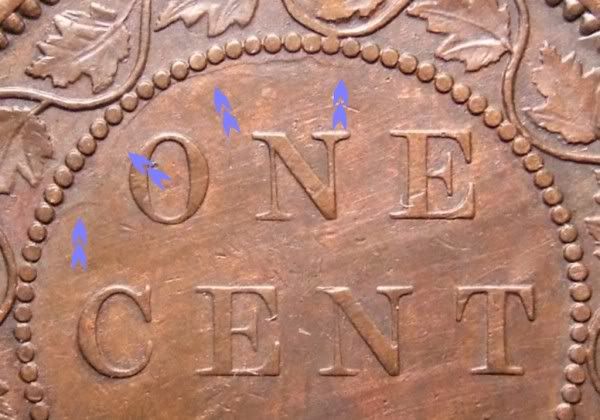 |
| Obverse head clash just under the bead line. This is fairly common. |
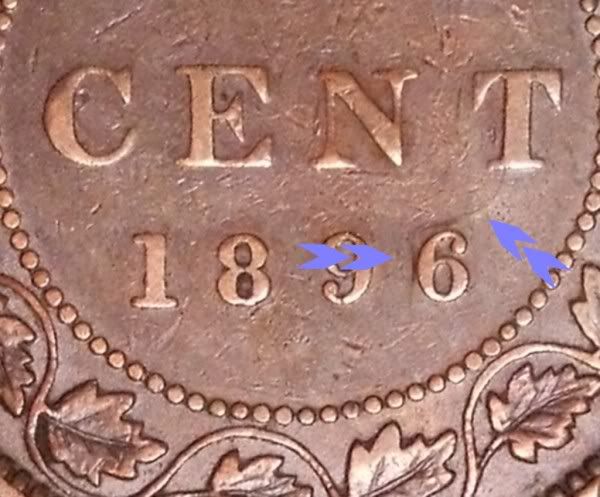 |
| Throat and chin clash. Note how it wraps the 6. These are less common. |
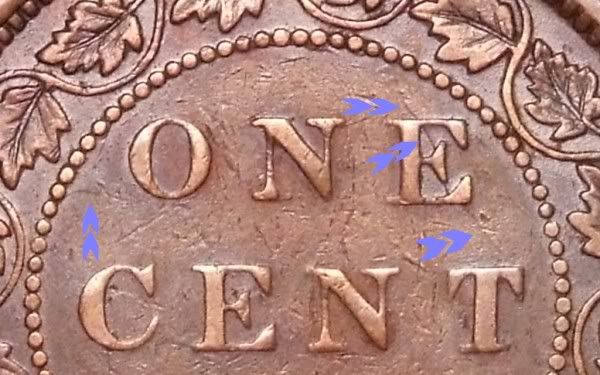 |
| Forehead and nose clash on the right, bun clash on the left. These are less common. |
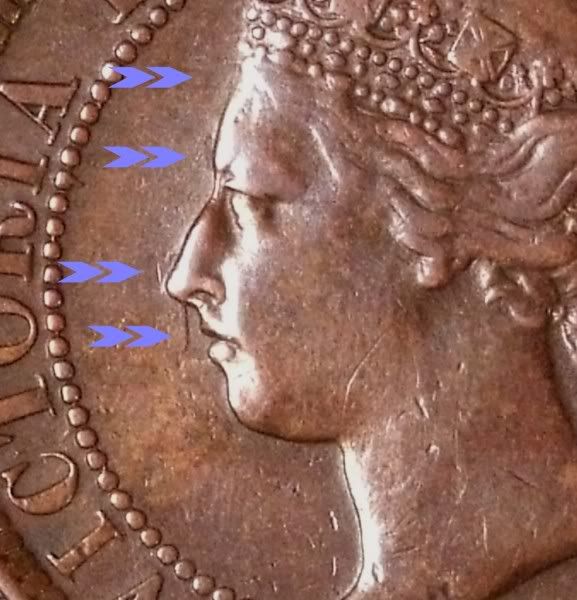 |
| E and T clashes. E sticking out of the forehead, the T from the nose and lips. These are fairly scarce. |
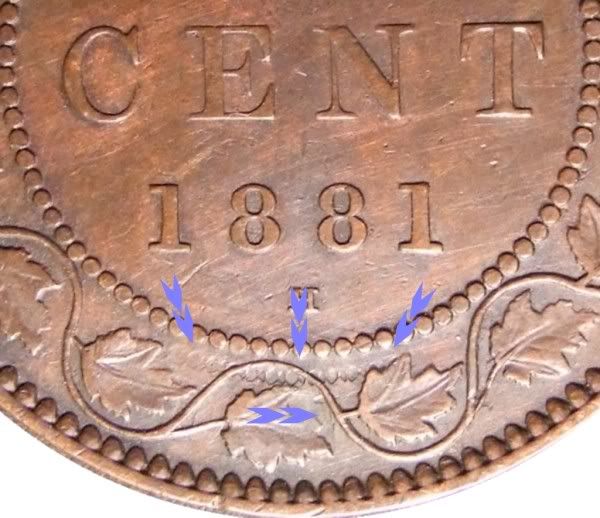 |
| Obverse beads and lettering in the leaf and vine line. This particular one is quite scarce. |


Dan - thanks for the explanation of die clashes I am a rank newbie to the study of Victorian large cents but I'm fascinated. So much so that I have totally ignored my US coins and have become engrossed in these beautiful and fascinating coins.
ReplyDeleteI am saving my pennies and plan to start buying Rob's books as soon as I can.
I only recently found your blog and you can count on my return.
Alan (pastorals in some forums and on ebay)